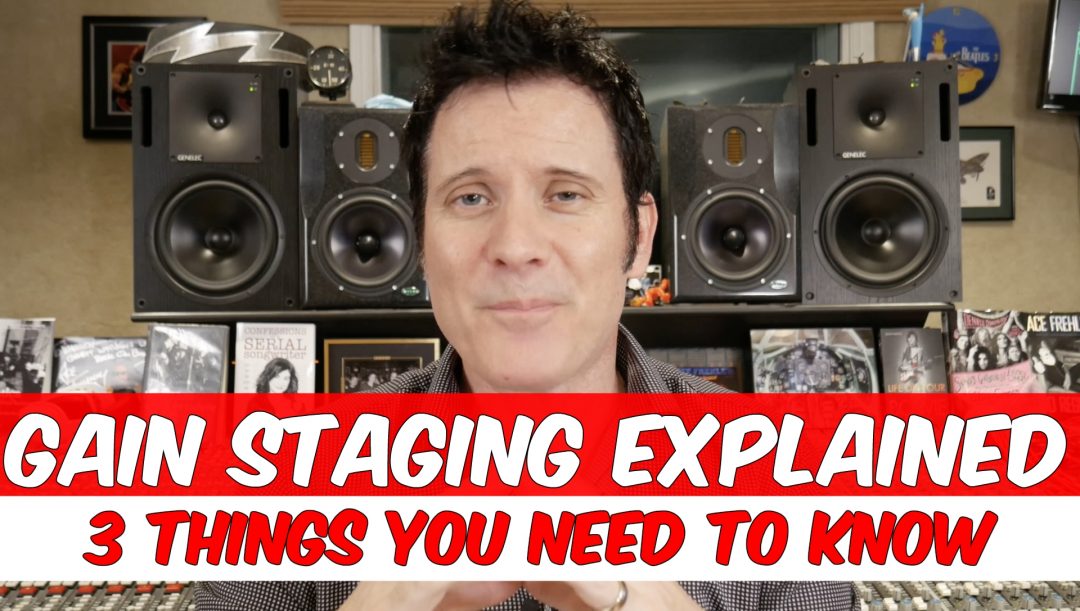Gain staging is a very hotly debated topic around the internet!
When getting started in music, gain staging meant something completely differently than it does now. In Ye Olden Days we were concerned with signal to noise ratio and tape hiss. We were always trying to print a signal that was super hot so that we would be well above the noise floor of the console and the tape machine’s hiss.
Later, when first switching to digital recording one of the pervasive theories was that you needed to have a hot signal because printing a quiet signal would produce a degradation in what was being recorded and converted into a digital audio file. Whether that is true or not really doesn’t matter these days because modern convertors are more than capable of accurately reproducing the source that is being recorded! You also don’t need to record a super hot signal, just a clean healthy signal that is above the noise floor! This brings us to our first tip.
- You don’t have to print hot. – What makes this easy in modern recording is that we are all recording at 24 Bit resolution and many are recording at 32 Bit floating point resolution. For the purpose of this article, let’s discuss 24 bit. Recording at 24 bit gives you plenty of headroom to get above that noise floor and still stay very far away from clipping your convertor. With each bit of resolution you have 6dB of headroom. Therefore, in a 24 bit recording we have 144dB of dynamic range to work with. So, you simply need to record a strong enough signal to get above the noise floor.
- Don’t Clip your individual Tracks or Master Buss – Maybe you’re working on mixing a song where you did recorded a really hot signal, and every 2 seconds you’re seeing that red clip light on your master fader. The most simple solution is to simply grab all of the faders and turn them down. 10dB will likely be enough and you can leave your master fader at 0 or unity and should not longer be clipping have extra headroom before the master fader (demonstrated in the video). You want this extra headroom so that you can do common mixing tasks like adding parallel busses for compression or adding effects sends etc. Every track that you have in your mix is adding some signal, and they are all being summed to 2 channels, the left and right output of you master fader. All that signal adds up, so make sure you’re not clipping and have plenty of head room before you start mixing.
- Start with Your Faders at Unity – Last but no means least, when you’re recording keep your faders ad 0 or unity. This is the default position in Pro Tools and many other DAW’s too. This is the optimum position for the faders, they have the most resolution right in the middle. You will notice that the there are numbered markings between the fader and the track meter. These numbers represent the amount of dB’s that the signal is being attenuated by when you move the fader. Notice how the distance Between -10 and +10 dB is nearly half the lenght of the fader, and the other half is goes from -10 all the way down to ∞. The adjustments you are making as you pull the fader get smaller and smaller. So, if you record a signal that is too hot and end up pulling the fader down to -30 to make up for that you will end up making it more difficult to make fine adjustments in the fader such as volume rides on a lead vocal. Give yourself the luxury of plenty of headroom and start by recording with those faders set at 0.
Do you still have questions about gain staging? Leave them in the comments below, I would love to hear from you and be able to help you make your best record yet.
If you haven’t tried the academy yet, you can sign up for a 14 day free trial and also get my bundle of goodies for free! Including drums samples that I have made and used on records with Aerosmith and the Fray!
Have a marvellous time recording and mixing,
Warren Huart
